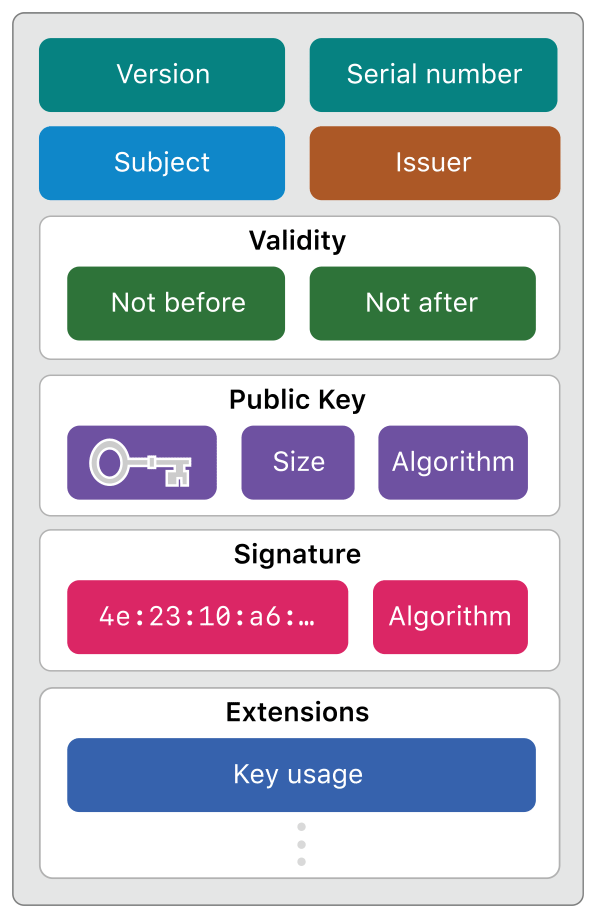
Manage digital certificates.
A digital certificate is a collection of data used to securely distribute the public half of a public/private key pair. Figure 1 shows the parts of a typical X.509 certificate that make this possible. Along with structural information, the certificate contains name and contact information for both its issuer and its owner (or subject), plus the owner's public key. A date range indicates when the certificate is valid. Certificate extensions provide additional information and conditions, like acceptable uses for the public key. When assembling the certificate, to vouch for its integrity, the issuer digitally signs it using the issuer's own identity (private key and certificate).

To evaluate a certificate, you first verify its signature using the specified algorithm and the issuer's public key, which you obtain from the issuer's publicly available certificate. A valid signature confirms that the certificate under evaluation, known as the leaf certificate, is unaltered. But in order to trust this result, you must also trust the issuer's certificate. You use a similar procedure to test this certificate, and the one that guarantees that certificate, and the next, and so on in a chain back to a trusted root authority whose certificate, known as the anchor, which you trust implicitly. The public key included in the leaf certificate is then considered trustworthy. You can be assured that it has come unaltered from the certificate's owner who controls the corresponding private key. This allows you to securely use the public key to engage in asymmetric cryptography with the certificate's owner.
For more details about how certificates work, read Digital Certificates in Cryptographic Services Guide.